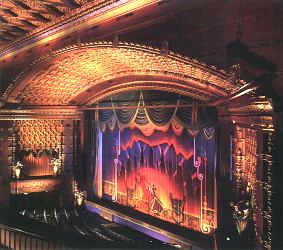In september 1990 the FCC decided to select a simulcast HDTV system. Broadcasters would be required to send two over-the-air transmission signals, one in NTSC (analog) and the other in HDTV (digital). The FCC believes that terrestrial transmission will be the quickest and least expensive way to introduce this exciting new service to the American people.
What is DTV,HDTV?
Digital Television, or DTV, is a new industry standart for broadcasting pictures and sound using digital signals, allowing for dramatic improvements in both picture and sound quality vs. conventional NTSC programming. DTV programming can be delivered in either of two basic formats: standart definition (SDTV) or high definition TV (HDTV). These have different levels of resolution - from 480 scanning lines (interlaced or progressive), called SDTV, to as many as 1080 scanning lines (interlaced), called HDTV. Most digital TVs and digital set top boxes will be able to receive the signals in any of the DTV formats.
Screen Format.
All HDTV and some SDTV pictures will be transmitted in a wide screen format (like a movie theater) which is referred to as 16:9 aspect ratio. Today`s coventional TV aspect ratio is 4:3. SDTV programming may utilize 16:9 or 4:3. Wide screen programs can be viewed on conventional TV screens in the letterbox format (black areas above and below picture). Regular aspect ratio pictures will be able to be viewed on a wide aspect TV screen, with the picture digitally "stretched" to fill the screen, or with gray ares on both sides of the picture.



4:3
16:9


